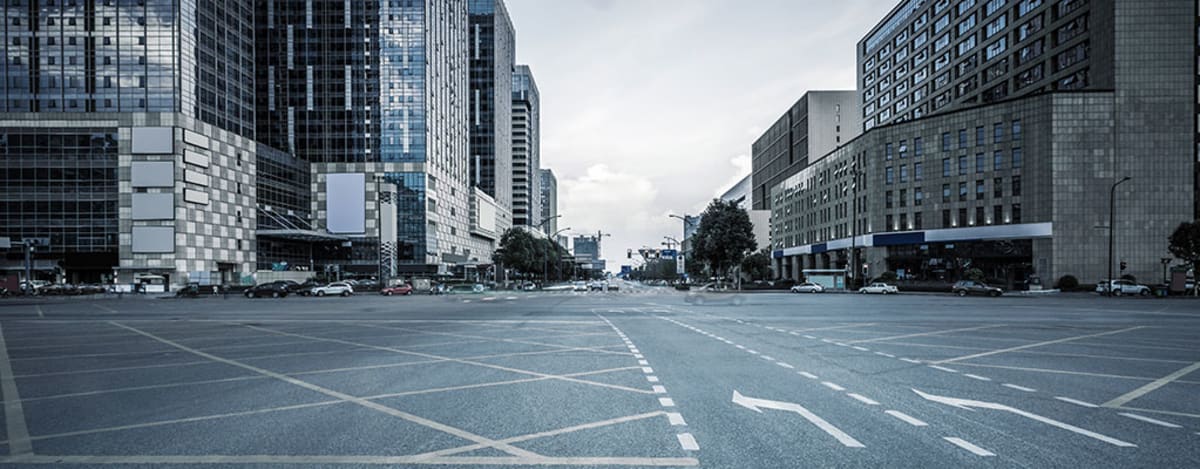For the past century, the urban skylines of major cities have been defined by their central business districts (CBDs). Totemic skyscrapers, from the Empire State and Chrysler buildings of Manhattan to London’s Shard and Walkie Talkie, have encapsulated the economic nerve centre of commerce, attracting top-tier corporations and serving as a natural habitat for the talent that keeps these companies at the top of their game.
Then came COVID-19. Social distancing in offices became challenging and firms devised ways to safely disperse their employees while staying operational. RBS, for example, kept 95% of its branch network open by having more than 50,000 employees working from home.
And this could become normal. Twitter, for example, says its emphasis on supporting a distributed workforce capable of working from anywhere has been proven to work. Consequently, it decided that if employees are in a role “that enables them to work from home and they want to continue to do so forever, we will make that happen.”
Back to the office?
But who is inclined to return to the city office? A CBRE survey asked workers where they’d prefer to work after the crisis. Six per cent wanted to return full time to the office, 10% wanted to work mostly at the office, 29% wanted an equal mix of home and office, 28% wanted to work three or more days per week remotely, and 28% fully remotely.
“Big enterprises are adopting flexible working policies, moving away from relying on a single, central HQ and increasingly basing employees outside of major metropolitan hubs in flex spaces,” says founder and CEO of IWG plc Mark Dixon.
According to Colliers, demand for flexible workspace in H1 2020 saw a significant increase in suburban areas. In the outskirts of city centres it increased to 52% compared to only 38% in 2018-19, while demand for flexible workspace in the outlying areas increased to 16%, compared with 12% in previous years. Moreover, research by IWG shows that 83% of workers around the world would turn down a job that didn’t offer flexible working.
Unsurprisingly ‘Head of Remote’ is fast becoming a trending job title according to job search engine Adzuna, which observed that the number of remote jobs being advertised during the crisis has risen by 147% while searches for home-based jobs have risen by 660%.
Beyond commerce
This shift goes beyond commerce. In June, Mayor of London Sadiq Khan announced a consultation on plans for the Greater London Authority to relocate its HQ from the City Hall building to London’s Royal Docks, a move that could save £55m over five years.
Similarly, Whitehall, home of the UK’s civil service, has been the subject of relocation discussions. Prime Minister Boris Johnson’s ‘levelling-up agenda’, intended to stimulate the UK regions, has rebooted the ‘Whitehall of the north’ conversation, with Manchester as a contender to host thousands of civil servants.
So, does this mean a mass exodus of the office workforce from major city centres? Hardly, says Professor Richard Florida at the University of Toronto, who notes that pandemics can disrupt the status quo and also accelerate trends already underway.
A future for CBDs
Research, jointly conducted with Florida’s colleague Patrick Adler, which tracked the HQ locations of Fortune 500 companies over the last 70 years identifies a major shift. In the past, access to raw materials, logistics and labour – and the need for these all to be co-located – drove the choice of where businesses were situated. But the transition from a product manufacturing economy to knowledge-based industries means that “the ability to attract and retain talent has become the central factor in corporate location”, based on the fact that “70% of Fortune 500 headquarters are located in metros that rank in the top 25% for talent” (the share of the population that holds a bachelor’s degree or more).
Cities attract a younger demographic seeking better pay plus the potential for networking. That’s why tech giants are still betting on the future of urban CBDs to lure graduates, evidenced by Facebook’s new lease at New York’s Farley Building, and Amazon’s plans to install thousands of its employees in Manhattan’s Lord and Taylor building.
The rise of the hub and spoke
What this points to is the rise of ‘hub and spoke’ set-ups, where flexible suburban workspaces complement the urban HQ. This, says a recent Regus report, “finds favour with retail, utilities, construction and transport businesses seeking flexibility and lower costs.”
Vis-à-vis the future of city centres, when society returns to normal, remote working will also be ‘normal’, not exceptional. Flexible working will be embedded into the mindset of both employers and employees and working in the office might mean a stroll down to a local business hub in the suburbs, rather than a long trek on public transport.
But, for many businesses, the urban CBD will still be the beating heart where employees converge, albeit intermittently, when talking through a screen doesn’t quite cut it. After all, there’s still no substitute for the collegiate and social interaction that only a real office environment can provide.
IWG can support your clients with a customised workspace solution. Contact us to learn more.






